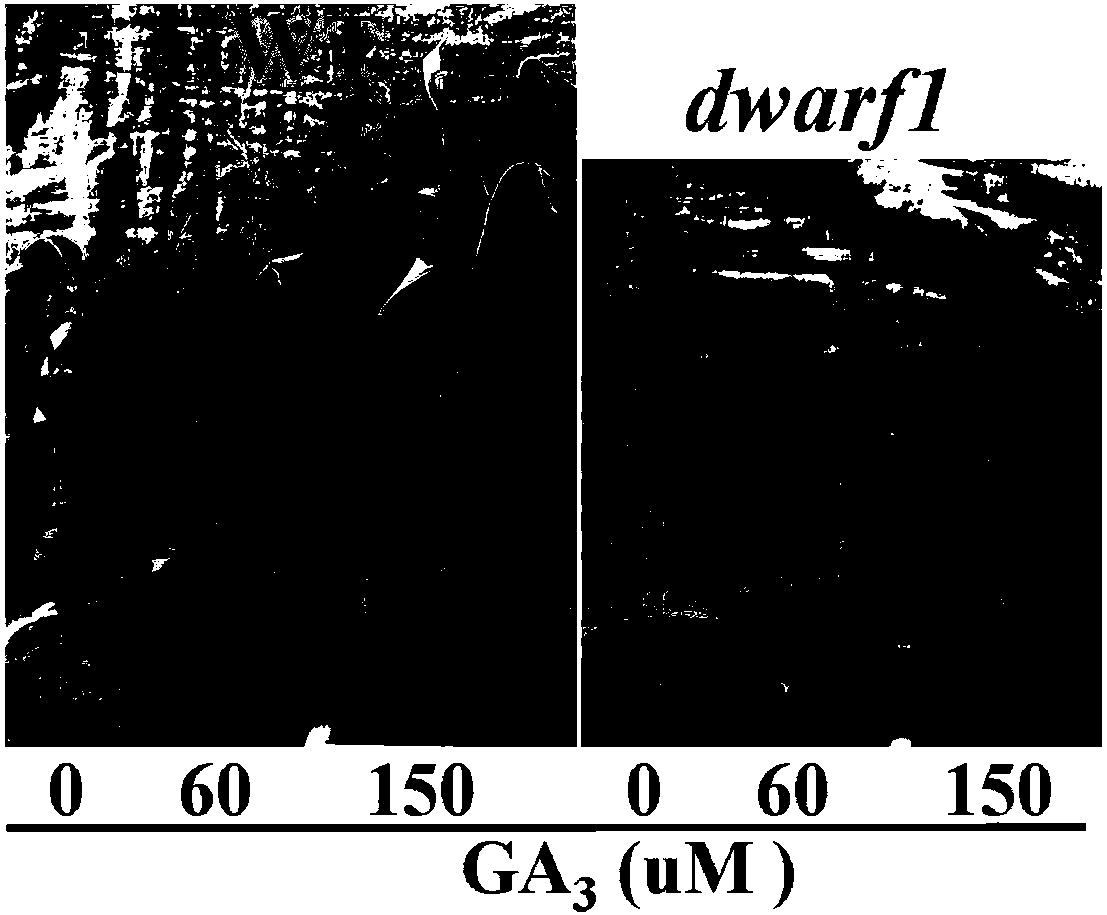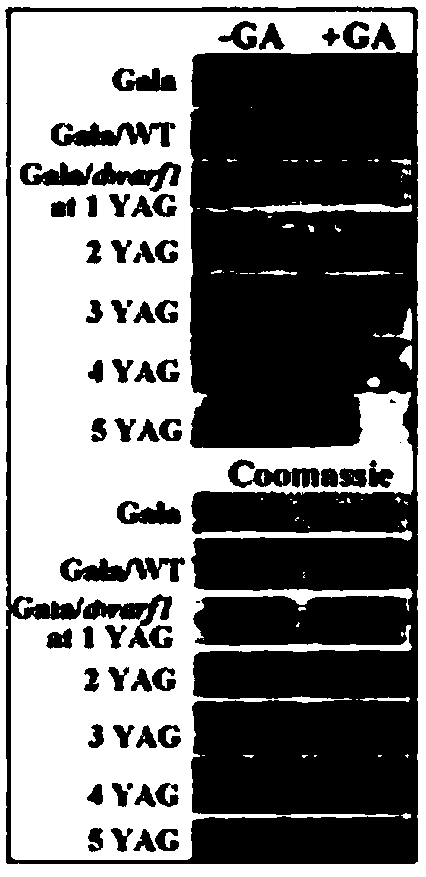Method for screening dwarf apple stocks by aid of reverse genetics
A technology of reverse genetics and dwarfing rootstocks, applied in the field of apple breeding, can solve the problems of Pingyi sweet tea not having dwarfing characteristics, the dwarfing characteristics of mutants cannot be used, and restricting the application and development, and improving the dwarfing ability. , easy to operate, simple steps
- Summary
- Abstract
- Description
- Claims
- Application Information
AI Technical Summary
Problems solved by technology
Method used
Image
Examples
experiment example 1
[0025] Experimental Example 1: Screening of GA-insensitive dwarf mutants in Pingyi sweet tea mutagenesis seedling population by forward genetic method
[0026] The wild-type Pingyi sweet tea (WT) seeds that were mutagenized by Co60 dose of 5000 roentgen radiation for 15 min were stratified at 4 °C for 60 days, grown for 30 days, and then sown into the substrate. Progeny—the dwarf mutant (dwarf1) was harvested for seed treatment, and the dwarf mutant (dwarf1) and wild-type Pingyi sweet tea (WT) were treated with 0 μM, 60 μM, and 150 μM of GA3, respectively. GA3, a homologue of gibberellin, commonly known as 920, has strong physiological activity. The response of dwarf mutant (dwarf1) and wild-type Pingyi sweet tea (WT) to GA was detected, and the results showed that the dwarf mutant (dwarf1) exhibited dwarf characteristics compared with wild-type Pingyi sweet tea (WT) , is not sensitive to GA response. like figure 1 shown.
experiment example 2
[0027] Experimental example 2: Grafting experiments to verify the dwarfing characteristics of dwarf1
[0028] The wild-type Pingyi sweet tea (WT) and the dwarf mutant (dwarf1) were grafted with Gala apple (hereinafter referred to as Gala) respectively, and managed under the same conditions to detect the dwarfing ability of the two rootstocks to scion. The results showed that the dwarf mutant (dwarf1) had dwarfogenicity to the scion. like figure 2 shown.
experiment example 3
[0029] Experimental example 3: Grafting experiment to verify that DELLA protein in dwarf1 is not sensitive to gibberellin
[0030] Gala self-rooted seedlings, Gala / wild-type Pingyi sweet tea (WT), and Gala / dwarf mutant (dwarf1) corresponding to 1-5 years old were treated with GA to detect the stability of MhGA1 protein. The results showed that GA treatment significantly promoted the degradation of MhGAI1 protein in Gala self-rooted seedlings and Gala / wild-type Pingyi sweet tea (WT) stock-spike combination, while Gala / dwarf mutant (dwarf1) significantly inhibited this degradation, indicating that The DELLA protein in the dwarf mutant (dwarf1) is insensitive to gibberellin. like image 3 shown.
PUM
 Login to View More
Login to View More Abstract
Description
Claims
Application Information
 Login to View More
Login to View More - R&D
- Intellectual Property
- Life Sciences
- Materials
- Tech Scout
- Unparalleled Data Quality
- Higher Quality Content
- 60% Fewer Hallucinations
Browse by: Latest US Patents, China's latest patents, Technical Efficacy Thesaurus, Application Domain, Technology Topic, Popular Technical Reports.
© 2025 PatSnap. All rights reserved.Legal|Privacy policy|Modern Slavery Act Transparency Statement|Sitemap|About US| Contact US: help@patsnap.com



